By Jeff Tavernier
The Lake District trip is run year after year and always finds enthusiastic members who gladly cross half the country to brave the elements and wash their kit in fresh water. I had been warned it was somehow different from the traditional Portland or Plymouth weekends and wanted to discover what makes it so unique.
On Friday 14 October, four of us took the road to Coniston, where we would stay for the whole trip. We arrived at night and headed to the Black Bull to meet up with Nick and Elaine, who’d stopped off in Kendal to get the cylinders filled by the friendly BSAC club there.
The pub was surprisingly busy and full of life in contrast to the cold and empty streets outside. The walls were covered with old newspaper cuttings depicting their locally brewed beers and local hero Donald Campbell – famous for dying in his attempt to reach the 300mph water speed record on nearby Coniston Water.
Day 1: An introduction
After the usual hearty breakfast and sandwich preparation, we headed to Brown Howe at the south-west end of Coniston Water for our first dive. We got lucky with the weather and were welcomed by beautiful scenery!
The shingle beach made for an easy entry, and we followed the shelf down to 17m, where there is supposed to be the wreck of a wooden motorboat.
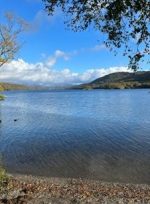
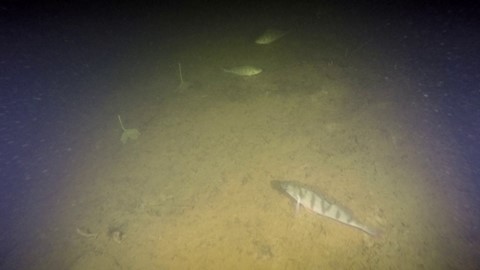
The water gradually got darker, although it remained fairly clear (unless you were following other divers!). We never found the wreck, but we did see quite a few small perch.
After this introduction to diving in the lake, we headed round to the east shore of Coniston Water, to a site called Bailiffs Wood. Here, a swim at 7m across a stoney plateau led to a wall that dropped to around 20m. We could have gone deeper, but it was very dark! The wall dive was quite unexpected, as the local divers have put a huge effort into decorating the site with all sorts of artefacts.
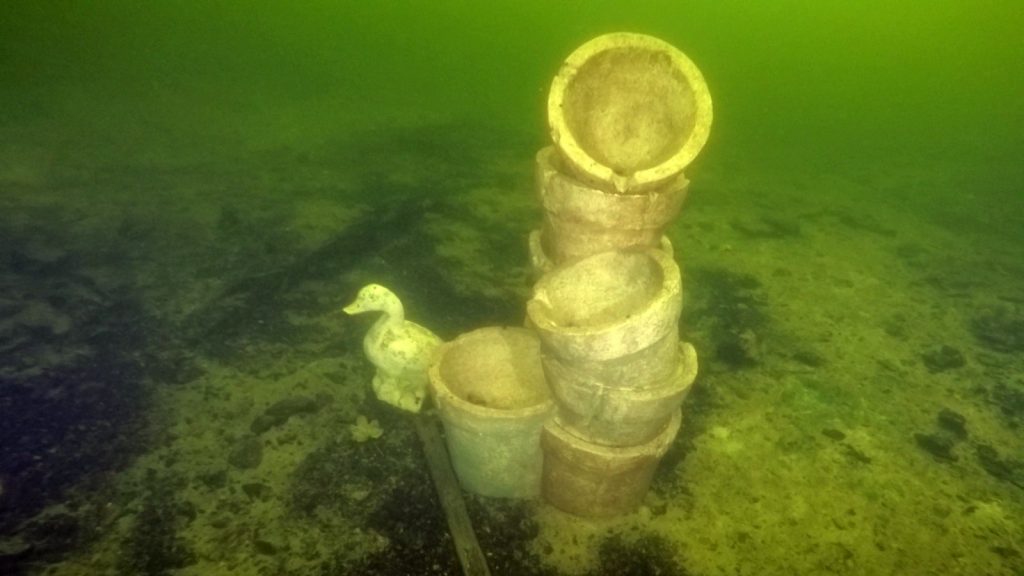
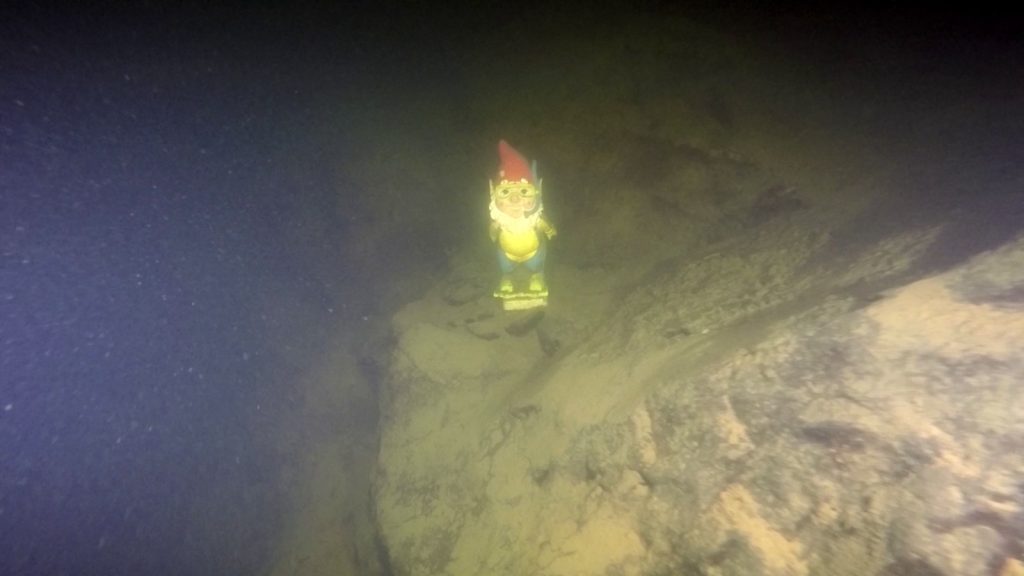
I was impressed by their creativity: apart from gnomes, Elaine and I found a ‘bathroom’ with a toilet and bathtub, while others came across even more bizarre items, including a skull and an iron.
Day 2: A new lake!
Some members go regularly to the Lake District and have challenged themselves to dive ALL of the lakes – true determination and a spirit of adventure.
On our second morning we headed to Crummock Water, about an hour’s drive from Coniston. I could now fully appreciate why the Lake District is such a special place. Twisting roads, bracken-covered mountains and beautiful lakes. The scenery is fantastic, especially in its autumn colours: a real mix between Wales and the highlands. It is worth every minute spent queuing on the M6!
The first dive in Crummock Water had another beautifully decorated wall. The visibility wasn’t great due to all the rain we’d had, but you could see the unusual red colour of the rock, while drowned trees made for natural pieces of sculpture.
After lunch we drove down the same valley to the small but picturesque Buttermere, which was a new lake for the group.
We didn’t find much – a flat, sandy bottom and lots of perch – but Matt immortalised the epic moment with this photo.

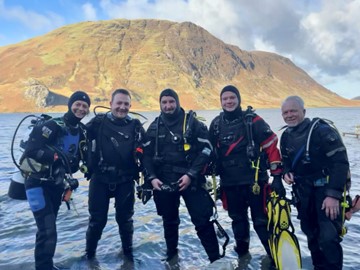
We may be the only five Clidive members to ever dive this lake. (Thanks to Gabriel whose cold forced him to provide shore cover and photography services.)
Day 3 – Saving the best ’til last
On the third and last day, we took the spectacular road to Wast Water, in the western part of the Lake District. It is doubtless the best dive site of all, thanks to its massive wall plunging to 70m.
The dive started in shallow water, where we followed a line straight out across a sandy plateau that shelved to 16m towards the middle of the Lake. The line ended on the top of a mound on the cliff edge, covered in plaques and trophies commemorating divers who had passed away and for whom Wast Water was a favourite site.
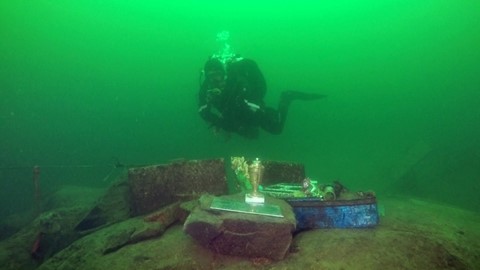
When we started our descent, the water was so clear that you could easily see up to the top of the cliff and along the wall, but looking down a few meters everything disappeared into darkness. As we descended to 35m, the temperature dropped from 12C at the surface to 8C, but the water was still clear enough to turn off the torch. Back at the top of the cliff we found more signs of local decorating activity, including a full-size dog kennel, with dog.
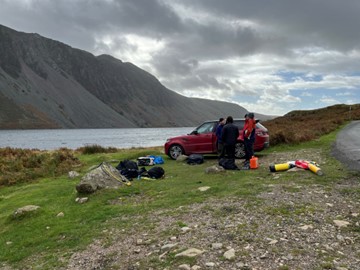
Back on the shore, we packed away the kit and ate our lunch, conscious that we had to wait at least an hour before heading over the hills. Although the lakes are generally only 50-100m above sea level, any journey before or after the dive will take you to at least 200m and the altitude tables we learn as Sports Divers are needed here!
Diving in the Lake District was completely different from coastal dives. Here you are surrounded by incredible scenery, and this is enough in itself to justify a trip to this part of the country. Moreover, visiting the walls, submerging in clear dark waters and seeing the creativity of the local divers is an unforgettable experience—a great way to end the diving season!

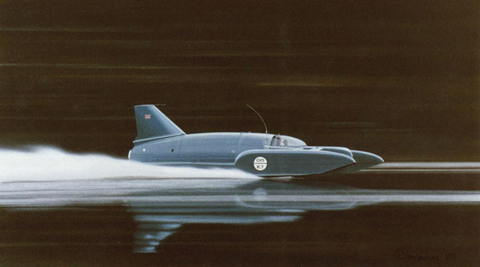
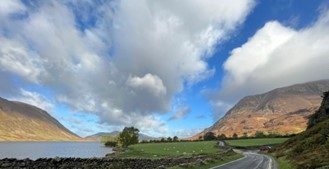
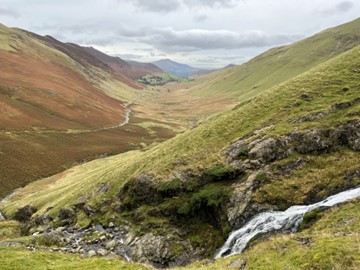
 We are an LGBTQIA+ friendly club
We are an LGBTQIA+ friendly club